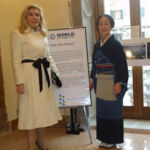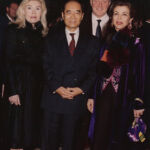World heritage, both cultural and natural, is our legacy from the past, what we live with today, and what we pass on to future generations. Irrespective of where and when the magnificent cultural monuments have been created and the beauties of nature are located, they are a source of life and inspiration which belong to all the people in the world.
The protection and maintenance of the World Heritage all over the world is considered by UNESCO as exceptionally precious for humanity, and for this reason, in 1992, it founded the World Heritage Centre, which constitutes the point of reference and the coordinator of all issues related to the World Heritage. Inter alia, the Acropolis of Athens, the Pyramids of Egypt, the Baroque cathedrals of Latin America, Mount Athos, the archaeological site of Olympia, etc. are included in the list of monuments and sites that have been recognised as monuments of world heritage and are protected by UNESCO.
The basic axis of the World Heritage Centre is the implementation of the International Convention for the protection of world heritage, whether cultural or natural; it was adopted by UNESCO in 1972 and encourages the cross-country collaboration for the identification, protection and preservation of world heritage.
The Centre acts in various sectors, such as:
- It organises the annual meetings of the World Heritage Committee as well as its Bureau.
- It renews and updates the list of world heritage monuments and advices the country-members of UNESCO on the submission of nomination of proposals for properties on their territory to be considered for inclusion in UNESCOs World Heritage List.
- It organises the provision of international aid by the World Heritage Fund, after having evaluated the needs.
- It collects and coordinates the reports on the condition of various monuments.
- It coordinates the direct action that should be taken when a site is threatened.
- It organises know-how seminars and conferences, as well as educational seminars on world heritage, aiming at the awareness of young people on the importance of the preservation of the world heritage monuments.
As a UNESCO Goodwill Ambassador, the President of the Foundation for the Child and the Family, Ms Marianna V. Vardinoyannis, collaborates with the World Heritage Center for the implementation of its objectives and has taken major initiatives, such as:
- She organised an exhibition entitled The Unity of an Unique Monument : the Parthenon, in the UNESCO Headquarters in Paris.
- She participated as a member of the Honorary Committee, in the International Conference organised the UNESCO in Venice, with the support of the Italian Government, in October 2002, for the celebration of the 30th Anniversary of the Convention for the Protection of the World Cultural and Natural Heritage.
- She supported the organisation of the photographic exhibition entitled Our Past, our Future in Venice,where impressive cultural and natural monuments and sites from all over the world were presented. With her initiative the same exhibition was presented in the United Nations Headquarters in New York.
- She supports the UNESCO project for the restoration of the Aghia Sophia Church in Istanbul, and she collaborated withGeorge Dalaras organising a great concert of hisat the Herodeion Theatre in Athens, the income of which has been offered for this purpose.
- With her initiative and under her noble sponsorship, the International scientific Workshop in Ancient Olympia was realised aiming at exchanging views and discussing more precise and effective means for the management of the dangers that threaten the ancient monuments, as well as the formation of measures for their safekeeping.
- She further supports the UNESCO project for the safeguarding of the Oral and Intangible Cultural Heritage,* the project for the Restoration of the Church of Nativity in Bethlehem, and she is in charge for the implementation of the UNESCO programme for the protection of the oral musical heritage of Azerbaidjan, Azerbaijani Mugham.
* According to the Convention for the Safeguarding of the Intangible Cultural Heritage, the Intangible Cultural Heritage (ICH) is defined as the practices, representations, expressions, as well as the knowledge and skills, that communities, groups and, in some cases, individuals recognise as part of their cultural heritage. ICH is often called living heritage and is manifested, inter alia, in the following domains:
- Oral traditions and expressionsincluding language as a vehicle of the intangible cultural heritage;
- Performing arts(such as traditional music, dance and theatre);
- Social practices, rituals and festive events;
- Knowledge and practices concerning nature and the universe;
- Traditional craftsmanship.
The Intangible Cultural Heritage is transmitted from generation to generation and is constantly recreated by communities and groups, in response to their environment, their interaction with nature, and their history. It provides communities and groups with a sense of identity and continuity and protects, promotes, preserves as well as develops the cultural diversity and human creativity.


